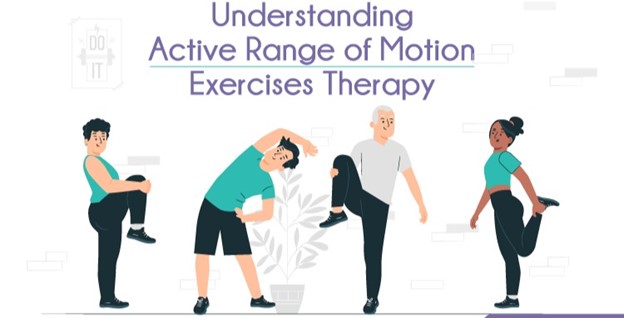A nurse is providing preoperative teaching to a client about promoting circulation during the postoperative period.
Which of the following instructions should the nurse include?
Participate in range-of-motion exercises
Use an incentive spirometer every 4 hours
Remain on bed rest for 24 hours following the procedure
Place a pillow under your knees while in bed
The Correct Answer is A

This instruction will help the client to prevent venous stasis and thrombosis, which are common postoperative complications. Range-of-motion exercises promote blood circulation and prevent muscle atrophy and contractures.
Choice B. “Use an incentive spirometer every 4 hours.” is wrong because it is not related to promoting circulation, but rather to improving lung expansion and preventing atelectasis and pneumonia. Using an incentive spirometer is also important for postoperative clients, but it does not address the question.
Choice C. “Remain on bed rest for 24 hours following the procedure.” is wrong because it is the opposite of promoting circulation.
Bed rest increases the risk of venous stasis, thrombosis, and pulmonary embolism. Postoperative clients should be encouraged to ambulate as soon as possible, unless contraindicated.
Choice D. “Place a pillow under your knees while in bed.” is wrong because it also impairs circulation and increases the risk of thrombosis.
Placing a pillow under the knees can cause pressure on the popliteal veins and reduce blood flow. Postoperative clients should avoid this position and keep their legs in a neutral or slightly elevated position.
Nursing Test Bank
Naxlex Comprehensive Predictor Exams
Related Questions
Correct Answer is B
Explanation
The correct answer is choice b. "I can start the medication 30 minutes earlier."Choice A rationale: This is an inappropriate response, as the nurse should not adjust the time and schedule for the administration of alteplase recombinant, which is a time-sensitive medication used to treat a thrombus in the coronary artery. The administration of this medication must be done within a specific time frame to be effective.Choice B rationale: This is the correct answer. Alteplase recombinant is a thrombolytic medication used to dissolve blood clots in the coronary artery. It is a time-sensitive medication, and it is crucial to administer it as soon as possible to minimize the damage to the heart muscle. Starting the medication 30 minutes earlier is an appropriate action to include in the plan of care, as it can help ensure the medication is administered within the recommended time frame.Choice C rationale: This is an inappropriate response. Alteplase recombinant should be administered within a specific time frame, typically within 3 to 4.5 hours of the onset of symptoms. Waiting up to 2 hours after the usual schedule time to give the medication would be outside the recommended time frame and could potentially reduce the effectiveness of the treatment.Choice D rationale: This is an inappropriate response. Alteplase recombinant should be infused at a specific rate, as recommended by the manufacturer or healthcare provider. Infusing the medication at a faster rate could increase the risk of adverse effects and should not be included in the plan of care without specific instructions from the healthcare provider.
Correct Answer is A
Explanation
The correct answer is choice a. Maternal hypoglycemia.
Choice A rationale:
Maternal hypoglycemia can lead to fetal bradycardia, causing a sustained low fetal heart rate. Hypoglycemia in the mother can affect the fetus by reducing the availability of glucose, which is essential for fetal metabolism and heart function.
-
Choice B rationale:
Maternal fever is more commonly associated with fetal tachycardia rather than bradycardia. Fever in the mother can lead to an increased fetal heart rate, not a decreased one.
-
Choice C rationale:
Chorioamnionitis is an infection of the fetal membranes and amniotic fluid, which can lead to fetal distress and tachycardia rather than bradycardia.
-
Choice D rationale:
Fetal anemia can also cause bradycardia, but in this scenario, maternal hypoglycemia is a more immediate concern as it directly affects the fetal heart rate by impacting the fetal metabolic processes.
Whether you are a student looking to ace your exams or a practicing nurse seeking to enhance your expertise , our nursing education contents will empower you with the confidence and competence to make a difference in the lives of patients and become a respected leader in the healthcare field.
Visit Naxlex, invest in your future and unlock endless possibilities with our unparalleled nursing education contents today
Report Wrong Answer on the Current Question
Do you disagree with the answer? If yes, what is your expected answer? Explain.
Kindly be descriptive with the issue you are facing.
